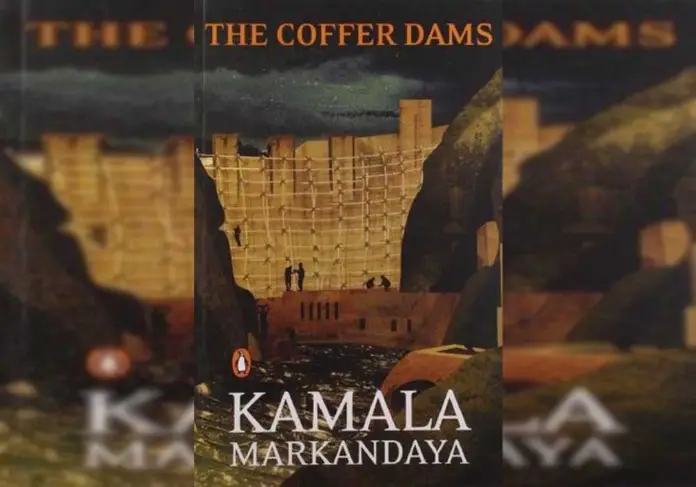‘The Coffer Dams’ by Kamala Markandya, an Indian writer, is a realistic portrayal of the necessity to build a dam in India.
Set in the 1960’s, the book was written a long time back.
At the heart of the novel lie the themes of identity, displacement, scientific progress and development, mechanical strength, spiritual weakness and moral doubts.
Protagonist Howard Clinton, a British, arrives in India to build a dam. He is aided by his young wife Helen and a team of skilled workers, Manderick being the supervisor and most trusted of his men.
Helen is not like the typical Memsaahib. She has a soft corner for the villagers and cannot understand how her husband can be so brutal. How can you replace the primitive way of life with a more modern one? It is utter destruction. Havoc that humankind wreaks on nature.
Clinton and his team face a challenge. They have the daunting task of dynamiting the mountains and directing the course of the river by building the structure of a dam. They face dangerous situations where many lives are lost, but to Clinton, the dam is more than a project. It is an obsession, not however shared by Helen.
Upset by her husband’s practical stance and lack of sensitivity, she develops a camaraderie with the local tribesman. She believed they were more emotional and human than the insensitive Britishers. It is here that Bashiam is introduced. Helen wanted someone local, someone who could understand the breath and bones of the hill people and in Bashiam, she found that.
Bashiam, known as the jungly wala or the civilized jungly wala, became her linkman. Bashiam was impressed by Clinton’s development of machines and the dam. Helen couldn’t understand how someone primitive as Bashiam could love machines and progress. What Bashiam and Helen both had in common was rebellion.
Helen protests to Bashiam about the building of the dam. She says the people were persuaded to leave their homes. Why didn’t he stop the builders? However, he decided not to argue with Helen because he believed prudent men make a way for machines and evolution.
The author here points to how the West understood no other language. The western notions of seduction, persuasion, and coercion led to the displacement of the locals.
The chief of the village says the locals are becoming like the city people. They want money too now. Helen says it is a useful commodity.
The old man is perplexed how, with money, they only buy trash. ‘There is no food and whose fault is it? The jungle is full of game and if they relied on that and not only on money which comes and goes…’
Helen is impressed by the old man’s spontaneity and fluent communication. She soothes him by saying soon the dam will be built and we will be gone, leaving the villagers in peace.
As the men lost their lives, there arose an argument over whether they should be given a Christian burial or according to their religious beliefs.
‘They teach us body is nothing, it’s the spirit that matters.’ The author here questions the true meaning of spirituality!
The first rains fall and, as the currents sweep the valley, the level of the river rises, so does the tension in the troubled camp. The vital question looms: to breach (break) the coffer dams, or allow them to stand, placing the lives of the tribesmen in jeopardy. It is a rudimental question that divides the camp, ‘exposing the lingering prejudices of a bygone colonial era’.
When the dam is finally built, the Indians call it their dam, the Great Dam, the Bharat dam. Yet the brain behind it was Clinton’s. It was definitely a joint venture.
With the dam complete, do Helen and Clinton part ways? Is Helen unfaithful to Clinton? Read the book to find out.
It is indeed intricately woven with a diversity of themes.








Comments are closed.